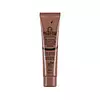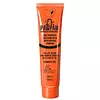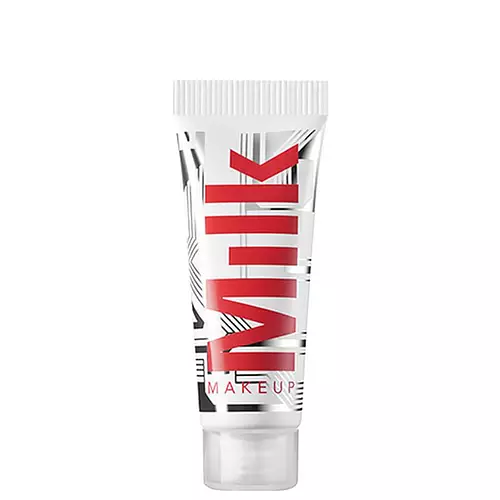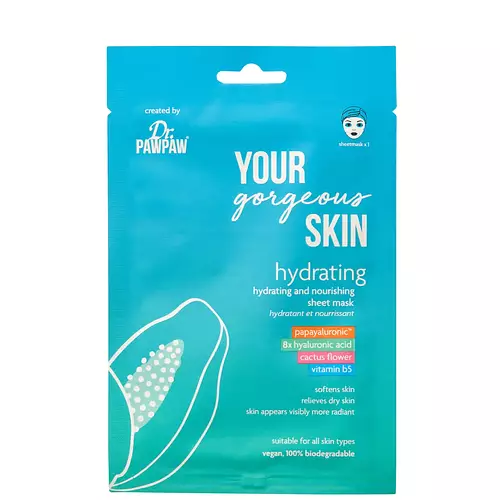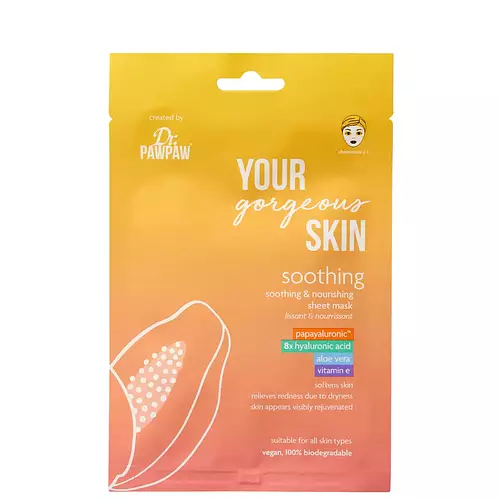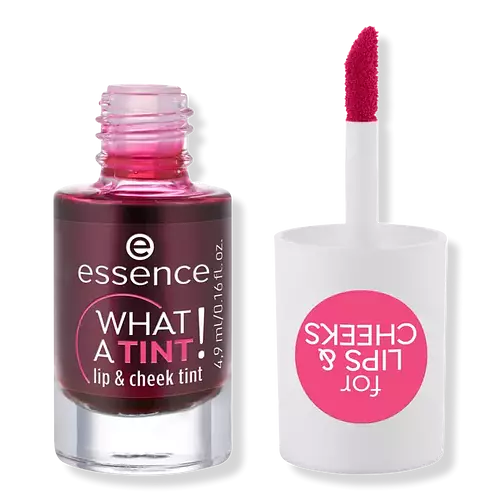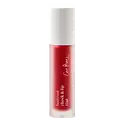
Dr. PAWPAW Tinted Balm Ingredients Explained
Updated on October 26, 2023 Submitted by Lapaki
Overview
What it is
Blush with 11 ingredients
Cool Features
It is vegan, cruelty-free, and reef safe
Suited For
It has ingredients that are good for dry skin
Free From
It doesn't contain any harsh alcohols, common allergens, parabens, silicones or sulfates
Fun facts
Dr. PAWPAW is from United Kingdom. This product is used in 3 routines created by our community.
We independently verify ingredients and our claims are backed by peer-reviewed research. Does this product need an update? Let us know.
Blush with 11 ingredients
Quick info
You should know
Benefits
This product contains 1 ingredient that may have this attribute:
Concerns
This product contains 1 ingredient that may have this attribute:
Ingredients 11
Ricinus Communis Seed Oil is the INCI name for castor oil.
Hydroxystearic Acid (HSA) is a wax-like fatty acid. It is a surfactant, emollient, and emulsifier.
Helianthus Annuus Seed Oil is the oil derived from the seeds of a Sunflower. Sunflower seed oil is non-fragrant. It is an emollient, meaning it helps to soften the skin.
Euphorbia Cerifera Cera is AKA as Candelilla wax. It is a natural emollient and helps give products a thick consistency.
Olea Europaea Fruit Oil is the fixed oil obtained from the ripe fruit of the Olive. In other words - olive oil.
Carica Papaya Fruit Extract comes from the papaya fruit. Papayas were first domesticated in Mexico and Central America.
Aloe Barbadensis Leaf Extract is an extract of the leaves of the aloe, Aloe barbadensis, Liliaceae.
Rosmarinus Officinalis Leaf Extract comes from rosemary. Rosemary is native to the Mediterranean.
Ci 15850 is the pigment color red. It is an azo dye and created synthetically.
Ci 19140 is also known as Tartrazine. Tartrazine is a synthetic dye used in cosmetics, foods, and medicine to add a yellow color.
Ci 77891 is a white pigment from Titanium dioxide. It is naturally found in minerals such as rutile and ilmenite.
Ingredient Ratings
Based on the number of likes and dislikes each ingredient has received.
Ingredients Explained
Ricinus Communis Seed Oil is the INCI name for castor oil.
Castor Oil helps moisturize the skin. It is rich in a fatty acid called ricinoleic acid. This fatty acid helps prevent moisture loss on the skin. This helps keep your skin soft and hydrated. Ricinoleic acid also has anti-inflammatory and pain reducing properties.
Besides hydrating the skin, castor oil is also used to hydrate hair. By keeping the hair shaft moisturized, breakage is decreased. More studies are needed to show castor oil's effective on stimulating hair growth.
Castor oil is created by cold-pressing castor seeds and then purifying the oil with heat. It was used in Ancient Egypt as fuel in lamps and to help treat eye irritation.
The term 'fragrance' is not regulated in many countries. In many cases, it is up to the brand to define this term. For instance, many brands choose to label themselves as "fragrance-free" because they are not using synthetic fragrances. However, their products may still contain ingredients such as essential oils that are considered a fragrance.
Learn more about Ricinus Communis Seed OilHydroxystearic Acid (HSA) is a wax-like fatty acid. It is a surfactant, emollient, and emulsifier.
Surfactants are cleansing ingredients. They reduce the surface tension of dirt and grime to be removed easily.
HSA is an emulsifier in certain formulations. Emulsifiers prevent ingredients from separating.
This ingredient may not be Malassezia folliculitis, or fungal acne, safe.
Learn more about Hydroxystearic AcidHelianthus Annuus Seed Oil is the oil derived from the seeds of a Sunflower. Sunflower seed oil is non-fragrant. It is an emollient, meaning it helps to soften the skin.
Sunflower seed oil contains many fatty acids. The fatty acids found in sunflower seeds include (from highest amount to least): linoleic acid, myristic acid, palmitic acid, stearic acid, arachidic acid, oleic acid, and linolenic acid.
These fatty acids help the skin create ceramides. Ceramides play a role in repairing the skin barrier.
Helianthus Annuus Seed Oil helps moisturize the skin. This in turn helps the skin look more rejuvenated and smoother.
Sunflowers are rich in vitamin E.
Historians believe Indigenous cultures of North America domesticated sunflowers before corn. Thus they relied on sunflower oil for a variety of uses. One such use is moisturizing skin and hair.
Sunflower seed oil may not be fungal acne safe. We recommend speaking with a professional if you have any concerns.
Learn more about Helianthus Annuus Seed OilEuphorbia Cerifera Cera is AKA as Candelilla wax. It is a natural emollient and helps give products a thick consistency.
This ingredient may not be Malassezia safe.
This wax comes from a shrub native to Mexico. Since it is a plant derived wax, it is considered vegan.
Learn more about Euphorbia Cerifera CeraOlea Europaea Fruit Oil is the fixed oil obtained from the ripe fruit of the Olive. In other words - olive oil.
The primary contents of olive oil are glycerides of the fatty acids linoleic, oleic and palmitic.
Olive oil also contains antioxidants such as Vitamin E. Antioxidants may help reduce signs of aging by fighting unstable free-radical molecules. It also contains Vitamins A (retinol), D, and K.
The squalene in olive oil makes it a great emollient. Emollients help soothe and soften your skin by trapping moisture in. This makes olive oil a great skin moisturizer.
Studies show olive oil to have antibacterial and antifungal properties in low concentrations. Another study found olive oil irritated sensitive oily skin. We always recommend speaking with a professional about using this ingredient in your routine.
Learn more about Olea Europaea Fruit OilCarica Papaya Fruit Extract comes from the papaya fruit. Papayas were first domesticated in Mexico and Central America.
This fruit extract contains papain and chymopapain, two types of enzymes. These enzyme have exfoliating and anti-inflammatory properties. One study shows papain may help reduce scarring.
Papaya is also a rich source of antioxidants. Antioxidants protect your skin against damage from free-radical molecules. This may help protect against signs of aging. One antioxidant present in papayas is lycopene.
Papaya also contains Vitamin A, also known as retinol.
While papaya is used as an ingredient to help lighten skin, research is limited on this.
The seeds of papaya have been found to have anti-fungal activity.
Learn more about Carica Papaya Fruit ExtractAloe Barbadensis Leaf Extract is an extract of the leaves of the aloe, Aloe barbadensis, Liliaceae.
You may know Aloe to be a good sunburn reliever and inflammation reducer. This is because it contains many components that are known to help reduce irritation and itchiness. These include vitamins, amino acids, polysaccharides, and more. The high water content of aloe also helps give a cooling effect.
Aloe contains the antioxidants Vitamins A, C, and E. These vitamins neutralize free radicals. Free-radicals are molecules that may damage your skin cells, such as pollution.
The aloe plant is naturally abundant in polysaccharides, a carbohydrate made of sugar molecules. Polysaccharides help hydrate your skin by mimicking your skin's natural carbohydrates.
As it is easily absorbed by the skin, aloe is a great moisturizer. It is both a humectant and emollient. Emollients help trap moisture in your skin, keeping your skin soft. Humectants draw water from the air to your skin.
Other components of aloe include sugars such as monosaccharides and polysaccharides, folic acid, choline, many common minerals such as calcium, fatty acids, amino acids, and Vitamin B12.
Aloe does not protect against UV rays, despite it soothing sunburns.
There are over 420 species of aloe but Aloe Barbadensis is the most commonly used for topical products.
Learn more about Aloe Barbadensis Leaf ExtractRosmarinus Officinalis Leaf Extract comes from rosemary. Rosemary is native to the Mediterranean.
While Rosmarinus Officinalis Leaf Oil can be volatile due to its fragrant properties, this component is usually removed in the leaf extract.
Rosemary Leaf Extract can help protect your skin against damage from free-radical molecules. It contains many antioxidants such as rosmarinic acid and caffeic acid. Rosemarinic acid has been found to help soothe skin conditions such as eczema and acne.
Learn more about Rosmarinus Officinalis Leaf ExtractCi 15850 is the pigment color red. It is an azo dye and created synthetically.
Azo dyes need to be thoroughly purified before use. This allows them to be more stable and longer-lasting.
This ingredient is common in foundations, lipsticks, and blushes. This color is described as brown/orangey red.
It has many secondary names such as Red 6 and Red 7. According to a manufacturer, Red 6 usually contains aluminum.
Learn more about CI 15850Ci 19140 is also known as Tartrazine. Tartrazine is a synthetic dye used in cosmetics, foods, and medicine to add a yellow color.
Tartrazine is created from petroleum and is water-soluble.
Some people may experience allergies from this dye, especially asthmatics and those with an aspirin intolerance.
Learn more about CI 19140Ci 77891 is a white pigment from Titanium dioxide. It is naturally found in minerals such as rutile and ilmenite.
It's main function is to add a white color to cosmetics. It can also be mixed with other colors to create different shades.
Ci 77891 is commonly found in sunscreens due to its ability to block UV rays.
Learn more about CI 77891When to use
How this product is used by our community
Directions
1. Apply directly to lips, cheeks or eyes.
2. Blend with your finger or a makeup brush.
1. Apply directly to lips, cheeks or eyes.
2. Blend with your finger or a makeup brush.
Compared With
Here are some products that it's often compared with
More Dr. PAWPAW Products
See all Dr. PAWPAW productsMore Blushes
See all blushesWe're dedicated to providing you with the most up-to-date and science-backed ingredient info out there.
The data we've presented on this page has been verified by a member of the SkinSort Team.
Read more about us

